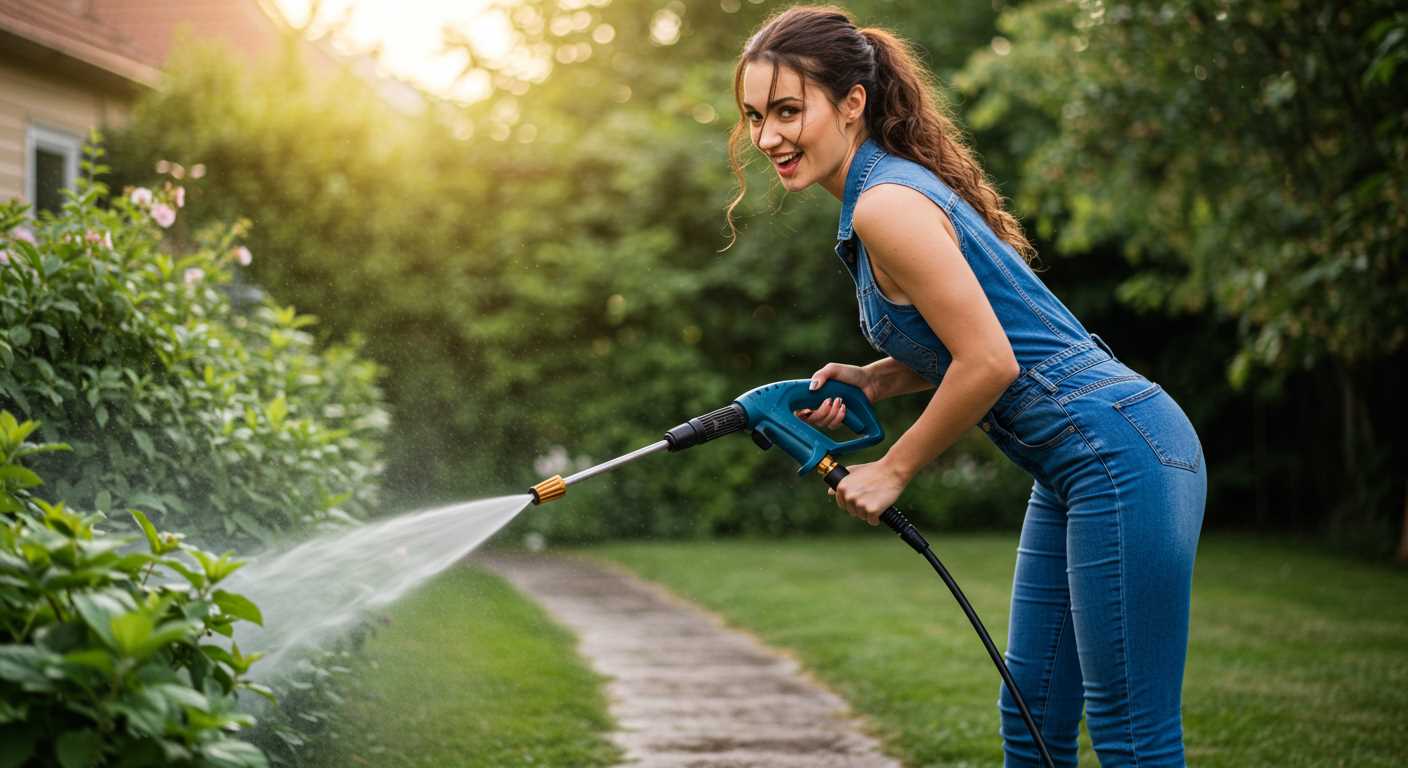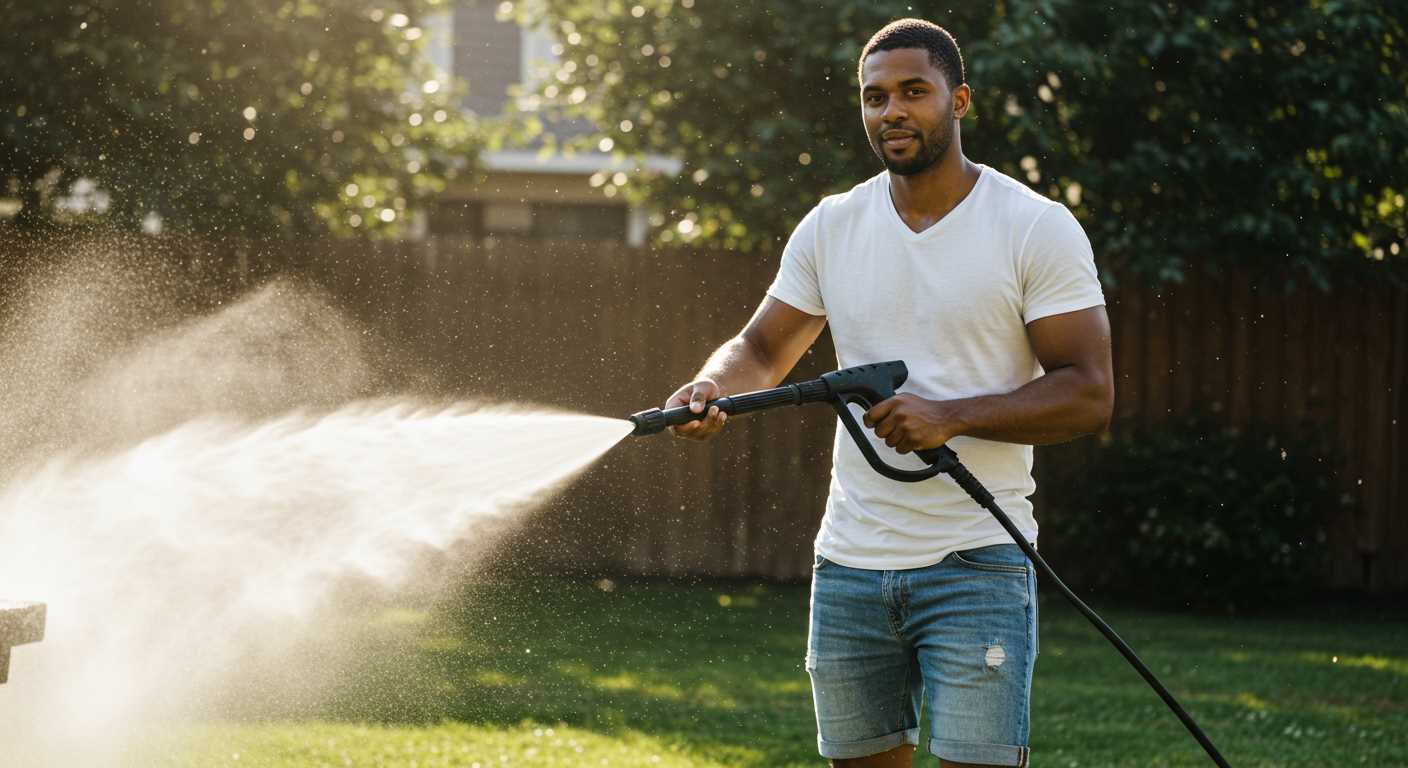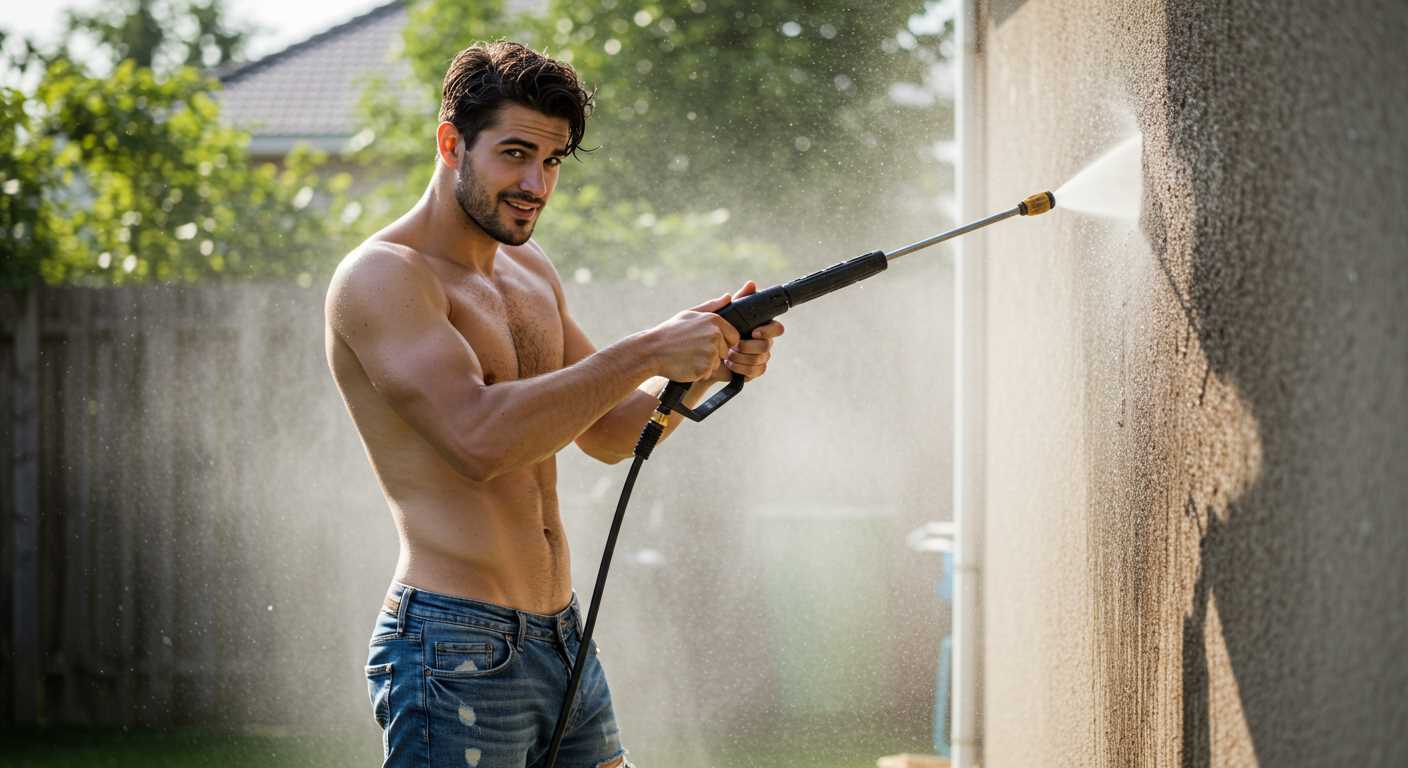

Check the nozzle. A clogged or incorrect size can restrict flow, causing the unit to alternate between high and low pressure. Make sure to clean or replace it to restore consistent performance.
Inspect the water supply. Insufficient flow can lead to irregular operation. Ensure your source is providing adequate pressure and volume. If using a garden hose, verify there are no kinks or blockages.
Examine the filters. If the inlet filter is dirty, it can obstruct water flow, initiating the erratic behaviour of your equipment. Regular cleaning or replacement can prevent this issue.
Look into the pump. Air leaks or damage can create problems in maintaining steady pressure. Ensure all connections are tight and inspect for any signs of wear on the seals or fittings.
Review the motor function. An electrical issue may cause the unit to engage and disengage rapidly. A qualified technician can diagnose and repair any faults if you suspect this to be the case.
Consider the settings. Some models feature adjustable pressure settings that, if not correctly set, may lead to fluctuating performance. Experiment with these options to find the ideal configuration for your cleaning tasks.
Identifying Issues with the Pressure Washer Motor
If you notice inconsistent operation, the motor may have issues. Begin by checking for worn or damaged components. Look at the brushes; if they are excessively worn, replace them. Ensure they make proper contact with the commutator. If the motor struggles to start, test the capacitor. A faulty capacitor can result in insufficient power delivery.
Inspect Power Supply
Verify that your power source is stable and delivering the correct voltage. Use a multimeter to check this. Fluctuations in electricity can disrupt motor performance, causing it to operate erratically. Ensuring proper connections and eliminating any extension cords can mitigate power delivery problems.
Examine Thermal Overload Protection
Many motors include thermal overload protection to prevent overheating. If activated, this safety feature turns off the motor periodically. Allowing the motor to cool may resolve temporary interruptions. If this occurs frequently, consider checking for clogged filters or defective impellers that might strain the motor.
Listening for unusual sounds during operation can also provide insights. Grinding or screeching noises often signify mechanical failure, which requires immediate attention. Ultimately, regular maintenance can reduce issues and prolong motor life.
Checking the Water Supply and Hose Conditions

Inspect the water source to ensure it’s providing adequate flow and pressure. A significant drop in water supply can lead to inconsistent performance. Confirm that the faucet is fully open and not obstructed.
Examine the hose for kinks or blockages. Any bends can restrict water flow. Make sure there are no leaks that could affect pressure stability. If the hose is worn or damaged, consider replacing it.
Evaluate the connections between the hose and the device. A loose or faulty connection can hinder proper water delivery. Tighten fittings where necessary to prevent air from entering the system.
Clean the inlet filter, if applicable. Accumulated debris can restrict water flow, leading to operational issues. Regular maintenance of this filter can keep the unit running smoothly.
Using the right hose diameter can impact performance. If you’re using an extension, ensure it matches the required specifications to maintain optimal water flow.
Evaluating the Pressure Regulator for Malfunctions

Inspect the regulator for signs of wear or damage. A malfunctioning component can cause erratic flow. Pay attention to any leaks or unusual noises that may indicate failure. Ensure that the regulator’s diaphragm is intact and free from cracks.
Testing Pressure Settings

Utilise a pressure gauge to verify that the settings align with the manufacturer’s specifications. If readings fluctuate significantly, recalibration may be needed. Adjust the settings carefully, ensuring they are within the recommended range. A consistent reading is essential for proper function.
Cleaning and Maintenance

Regular maintenance can prevent malfunctions. Clean any debris from the regulator and surrounding areas. Flushing the system with clean water can help remove blockages. Inspect associated seals for deterioration. Replace any worn components promptly to maintain optimal performance.
| Issue | Recommended Action |
|---|---|
| Reduced flow rate | Check and clean the regulator |
| Inconsistent pressure readings | Test pressure settings with a gauge |
| Visible leaks | Inspect seals and replace if necessary |
Inspecting the Nozzle for Blockages or Wear
Check the nozzle thoroughly for any clogs or signs of damage. A restricted opening is a common reason for irregular water flow. Begin by detaching the nozzle and inspecting it visually. Look for debris, mineral deposits, or hose fragments that may be obstructing the flow.
Cleaning the Nozzle
If you notice any blockages, use a small brush or a pin to dislodge the contaminants. For stubborn residue, soak the nozzle in a solution of vinegar or a mild descaler. Rinse it thoroughly with clean water before reattaching.
Examining for Wear
Inspect the nozzle’s tip for wear. A worn-out nozzle can spread the water stream too wide or create uneven spray patterns. If the edges appear frayed or misshapen, consider replacing it. Always use a nozzle compatible with your equipment’s specifications for optimal performance.
Regular checks of the nozzle can significantly enhance the machine’s efficiency and longevity. Keeping it clean and in good condition ensures a steady flow, preventing unwanted fluctuations during use.
Examining the Pump for Air Leaks and Damage
Inspect the pump thoroughly for any signs of air leaks or physical damage. Begin by checking all connections and joints, as wear or improper sealing can lead to air infiltration, disrupting the normal operation of the unit.
Look for Visible Cracks and Wear
Examine the casing for cracks or damage. If the exterior casing shows signs of wear, it may indicate internal issues. A damaged pump is less likely to maintain the necessary pressure for optimal functionality. Pay special attention to the area around the inlet and outlet ports, as these are common points for leaks.
Test for Air Leaks
To identify air leaks, perform a simple test by running the machine and listening closely for unusual hissing noises, which can suggest escaping air. You can also apply soapy water to the connections; if bubbles form, you’ve pinpointed a leak. Seal any identified leaks with appropriate sealant or replace damaged components to restore proper function.
Understanding the Role of Filters and Maintenance Gaps
Regular inspection and cleaning of filters can significantly affect the operation of your equipment. A clogged filter inhibits water flow, causing fluctuations in performance. Replace filters as per the manufacturer’s recommendations to maintain optimal function.
- Inspect the inlet filter regularly. Debris accumulation can lead to inconsistent water supply.
- Change or clean filters every month if used frequently.
Neglecting maintenance can also cause operational issues. Check for wear and tear in hoses and components. Replacing worn parts promptly can prevent larger problems.
- Schedule routine maintenance checks at least twice a year.
- Keep a maintenance log to track filter changes and replacements.
- Consider using a water softener if hard water causes sediment build-up.
Inspect the entire system, focus on the pump area, and ensure that all components are clean. Pay close attention to seals and gaskets, as they can degrade over time, leading to further complications.







